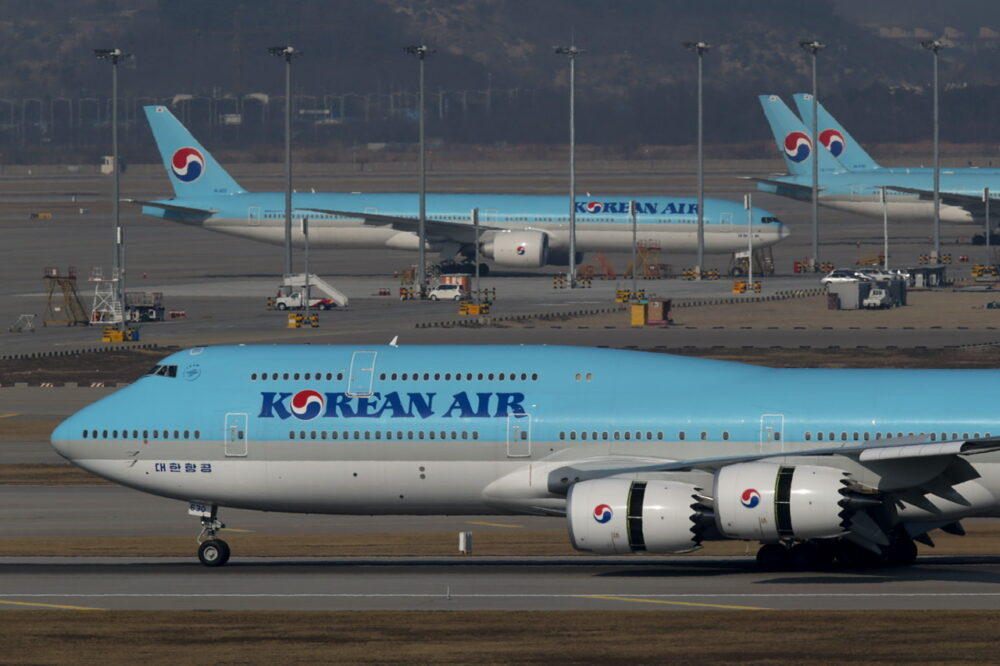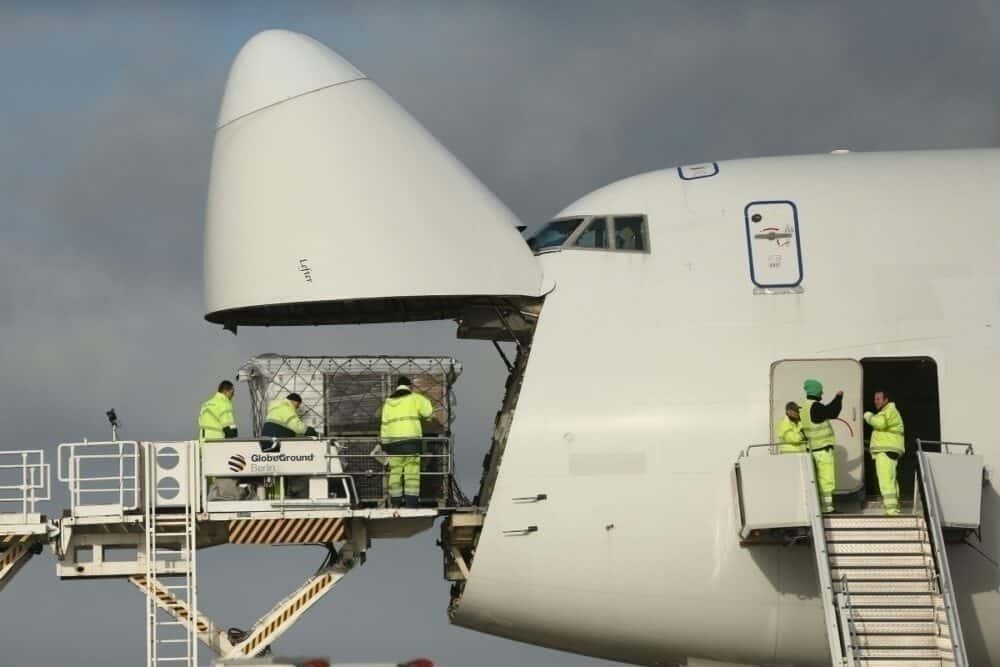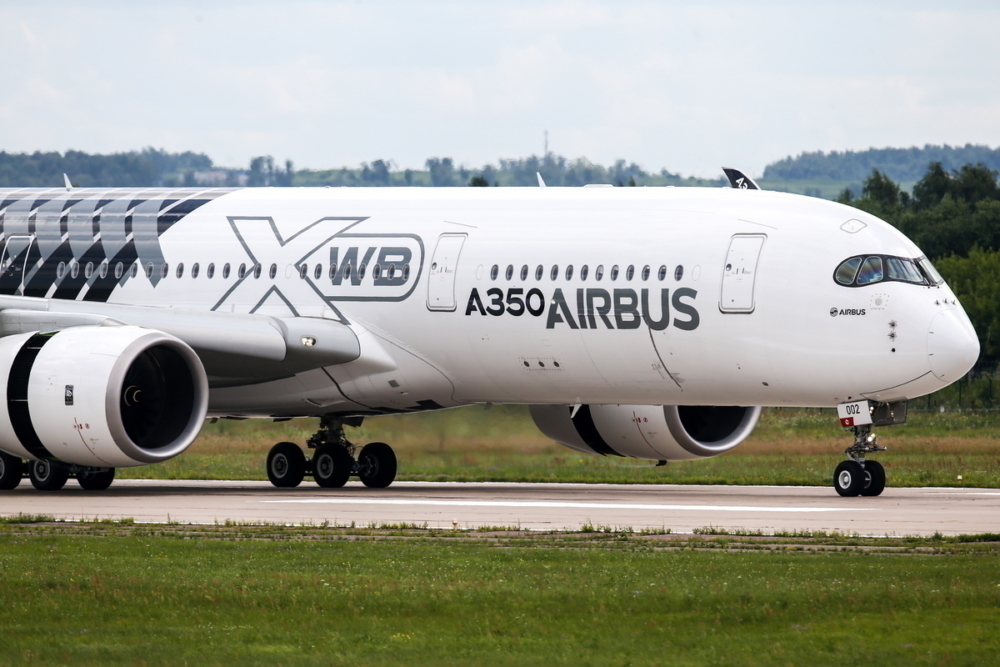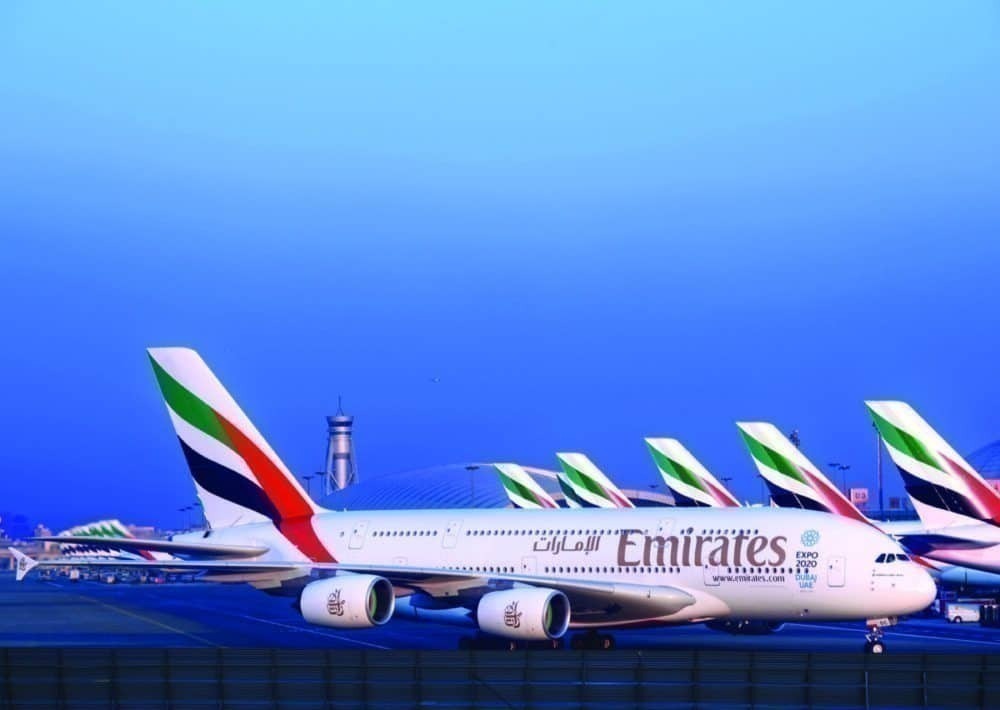The Boeing 747, known commonly as the Jumbo Jet, is one of the most recognizable and loved aircraft ever made. Flying for over 50 years, it is now seeing the end of its life with many airlines.

With the new 747-8 cargo version still being built, the aircraft is not going anywhere soon. But is certainly well on the decline from its glory days. This guide looks back at the development of this great aircraft, how it changed aviation, and the declining role it has today.
Concept and delivery of the 747
The story of the 747 starts with the success of the Boeing 707. This game-changing aircraft first flew in 1957 and is widely regarded as the jet age’s first highly successful aircraft. The de Havilland Comet had entered service several years earlier but faced several design problems and early accidents.

Pan American World Airways (Pan Am) was the launch customer for the 707 and had worked closely with Boeing on its development. This collaboration continued with the 747, with Pan Am’s vision of an aircraft over twice the capacity of the 707 being a major influencer in the 747’s development. This high capacity would help lower costs per seat and get around the growing problem of aircraft congestion at major airports.
Development of the 747 began in April 1966, once Pan Am ordered 25 aircraft for $525 million. Such close interaction between airline and manufacturer is unusual and unmatched in other aircraft projects.

Designing the Jumbo
In building the 747, Boeing incorporated many elements from its previous success as a military aircraft producer. The design for the 747 returned to previous plans it had put forward for a military transport aircraft for the US government. It lost this project to Lockheed and the C5 Galaxy but took several parts of this design forward to the 747.
This included the iconic second deck. It was originally intended to be a full upper deck, but this did not meet safety and evacuation requirements at the time. The result was the smaller partial deck. This has been a major success for the 747. It allowed for the full, wider, lower deck to be used for freight. And it was used by many airlines as extra space for lounges, bars, or even restaurants.
Boeing engineer Joe Sutter led the 747 development program. He had previously worked on the 707, 727, and 737, and he was transferred to lead 747 development. Many of his initiatives, such as dual design for freight use, were critical to the program’s success and longevity.
Improvements through the variants
The first version launched was the 747-100. The first 747-100 aircraft was completed in September 1968, with its first flight taking place on February 9th, 1969. And it entered service with Pan Am on January 22nd, 1970, with its first flight from New York to London.

The 747-100 saw limited success, with 205 aircraft sold. It was the improved 747-200 that fully realized the potential of the aircraft. The 747-200 launched in 1971 and offered higher-powered engines, improving the range and payload of the 747-100. It was initially offered with upgraded Pratt & Whitney JT9D-7 engines, but options were later available with General Electric and Rolls-Royce engines.

The 747-200 also introduced the option to be used for cargo, passenger, or mixed-use. The cargo version featured a lifting nose cargo door and a large side door. The convertible version offered removable seating and a nose door. And the combi version had a moveable divider on the main deck.
The 747-200 was much more of a success. The improved range saw it being used for transpacific and transatlantic services, and the cargo versions expanded its appeal to many more airlines. Overall, 389 747-200 were delivered, and the improved features went on to later variants.

The 747-300 first flew in 1982 and introduced the longer, stretched upper deck. It sold the fewest (only 81 aircraft) but not due to lack of popularity. On the contrary, it led to the speedy development of the improved next variant, the 747-400.

The 747-400 was launched in 1989, with Northwest Airlines. It kept the stretched upper deck of the 747-300 and added several more improvements, including:
- Wingtip modification and winglets, offering fuel efficiency improvements
- New cockpit design for a two-person flight crew of two
- Additional fuel tanks
- Choice of improved engines
The 747-400 remained in production until 2009 (2005 for the passenger version) and has been the best selling variant by far, with 694 aircraft delivered. It has continued to build on the dual passenger/cargo capability’s success, with several versions developed to meet different airline demands.

The final variant of the 747 has continued its evolution and improvement. The 747-8, launched in 2005 and first flying in 2010, incorporates technology and design from the 787 program.
It is also stretched an additional 5.6 meters, making it not just the longest 747 but the longest commercial aircraft to date (but the 777-9 will just beat it).

One of the most successful aircraft to date
Since 1970, 1,571 Boeing 747 have been sold. This peaked with the 747-400 and has, of course, tailed off with the 747-8, with most orders being for freighter versions.
Total sales of each main 747 variants are:
- 747-100: 205
- 747SP: 45
- 747-200: 393
- 747-300: 81
- 747-400: 694
- 747-8: 139 (47 passenger aircraft and 106 freighters)
For a long time, the 747 was the most sold of all widebodies. This lasted until March 2018, when it was overtaken by the Boeing 777.

In use all over the world
The spread of airlines which took on the 747 is impressive. Over time, it has seen service with many of the top airlines globally. This includes all the leading US legacy airlines (Delta Air Lines was the last to retire the 747 in December 2017).
Some airlines have been significant users. The top 10 passenger operators, for example, accounted for almost half of all orders.
The largest operator of the 747 has been Japan Airlines. It has operated 108 aircraft, including 20 of the original 747-100 variant (with 12 specially modified as an SR variant for the short-haul Japanese market). It operated 44 747-400 aircraft, with the last retired in 2011. Simple Flying took a detailed look at where all its 747s ended up.

The second-largest operator has been British Airways, operating 94 aircraft across all 747 variants. This includes 57 747-400 aircraft, the most of any airline.
Lufthansa has been the second second-largest operator in Europe, with 81 aircraft delivered. It is also the largest operator remaining in 2020, with 19 747-8 in service and eight 747-400 still in storage (and most likely to return for cargo use).

The largest operator in the US was United Airlines, with 22 of the original 747-100 (the second-largest purchaser after Pan Am), and 44 747-400 aircraft, the last of which retired in 2017.
Other top operators include Singapore Airlines, Cathay Pacific, and Korean Air. Qantas deserves a special mention, though. It introduced the 747-200 in 1971. After it retired the 707s in 1979, it became an all 747 operator (which last until the 767 was introduced in 1985).

It is not just airlines that have ordered the 747. It has seen use by many cargo operators (Cargolux, UPS, and Atlas Air have all operated more than 25 aircraft, for example).
And it has seen some specialized use:
- Most famously as Air Force One. The Boeing VC-25 is a modified version of the 747-200B, operated by the US Air Force as VIP transport – known as Air Force One when carrying the US President. Replacement aircraft, based on the 747-8, have been ordered and are due to be delivered by 2024.
- There are also four large cargo capacity lifting Dreamlifter aircraft, based on the 747-400, with a cargo volume of around three times.
- And NASA used two modified 747-100 aircraft as Shuttle Carrier Aircraft from 1977 until the Shuttle’s retirement in 2012.

How the 747 changed aviation
The 747 has been more than just a popular and well-sold aircraft. It stands apart from many other aircraft in the mark it has left on aviation.
Changing the economics of flying
Perhaps the biggest impact of the 747 in its early days was on ticket prices. One of the motivations of Pan Am in its desire for Boeing to develop the aircraft was to be able to lower prices per seat. With a capacity of around 2.5 times the existing Boeing 707, there was plenty of scope for airlines to spread the cost over more passengers.
Linked to this, the 747 helped to open up flying to more people. Airlines, of course, wanted to fill these larger aircraft, marketing fares to wider groups of passengers.
Increasing capacity was not the only influencer of ticket prices, though. The early years of 747 operation also saw the deregulation of airfares in the US. Before the 1970s, many countries had some form of regulated ticket pricing, making it difficult for airlines to differentiate themselves by price. In the US, this changed in 1978 with the introduction of the Airline Deregulation Act.

To give an idea of pricing before deregulation, some figures are given by Stephen Breyer in a 2011 Bloomberg article. He writes:
“In 1974, the cheapest round-trip New York-Los Angeles flight (in inflation-adjusted dollars) that regulators would allow: $1,442. Today one can fly that same route for $268.”
Making use of the space – new cabins and facilities
The 747 was the largest aircraft of its time and remained so until the A380 took to the skies in 2005. It was not just the size and the concept of two aisles that stood out, though; airlines made great use of the space.
It played a major part in the introduction of new cabins. Separate first and economy class seating had been prevalent since the late 1950s, but many airlines took this much further with the 747. Some airlines separated parts of their economy cabins during the 1970s, which eventually led to the introduction of a third class.

The upper deck was used by many airlines to create luxurious first class spaces. Such facilities were common in the early days of aviation (when flying was an expensive and luxurious affair) but had been lost during the development of larger jets and economy travel. There are many great examples of this:
Qantas offered one of the best with the Captain Cook lounge on its 747-200 aircraft. This was a nautical themed first class lounge with wood panels and vibrant colors.

Pan Am installed a restaurant for first class passengers. American Airlines and Continental used it for first class seating but installed luxurious lounges on the main deck.
In Asia, Air India, Singapore Airlines, and Japan Airlines all had upper deck first class lounges.

Combined passenger and freight use
This has been one of the big successes of the 747. The 747 was designed with freight use in mind, mainly as a backup to passenger sales. There was plenty of excitement, and development, in supersonic aircraft at the time it was designed. Boeing was also working on its design of the 2707 SST project, and the Russian Tupolev Tu-144 and British-French built Concorde both took to the skies in 1968/1969.
Supersonic flight, of course, did not work out as widespread as it perhaps could have been. Boeing canceled its 2707 project. The Tu-144 retired from passenger service in 1978, having never seen widespread use. Concorde went on to fly until 2002, but all airlines interested in it, apart from British Airways and Air France, canceled their orders and options.

What was bad for supersonic flight was good for the 747. Passenger use increased, rather than seeing supersonic competition. And its dual use for freight has appealed to many airlines. With the 777 as well, Boeing dominates the freighter market.

The decline of the 747
Improvements in twin engines
The 747 was designed to carry large numbers of passengers over a long distance. It did this well, but today other aircraft can do the same. Twin engines aircraft have improved significantly in both power and safety and are taking over from heavy four engine options.
At the time the 747 was designed, twin engines were severely limited in operation and not permitted to fly more than 60 minutes away from a diversion airport. This made transoceanic flights the domain of four-engine aircraft.
This has changed, though. ETOPS (Extended-range Twin-engine Operational Performance Standards) regulations were introduced in the 1980s and recognized the improved performance and reliability of twin-engine aircraft. The first rating given to the 767 permitted operation up to 120 minutes from a diversion airport. This has increased today, with ratings of up to 350 minutes for the Airbus A350.

Changes in operating models
It is not just improvements in twin engines that have seen the decline of larger four-engine aircraft. Airline operating models have changed too. The four-engine 747 and A380 best suit the hub and spoke operating model, where an airline operates high capacity flights between major hub airports. Indeed, this was a major motivation for the development of the A380, and the reason why Emirates has been able to make such a success of it.

There has been a shift from many airlines to more of a point-to-point model in recent years. This better suits lower capacity aircraft such as the A330, A350 or Boeing 777 and 787.
And the slowdown of 2020, of course, has done nothing to help high capacity aircraft. They were the first to suffer as airlines began grounding fleets. As Simple Flying reported in July 2020, around 91% of 747s and 97% of A380s were grounded.
Retiring the 747
The retirement of 747 fleets has been happening now for many years. Improvements in twins and the associated inefficiency and higher cost of operating four engines have led to their demise.
The largest operator over the Jumbo’s history, Japan Airlines, retired its last 747 in 2011. Singapore Airlines did the same in 2012 (but several remain in cargo operations), and Cathay Pacific followed in 2016.
2020 has seen several airlines retire fleets early. Virgin Atlantic announced retirement in May. Qantas retired the last of its 747-400s in July 2020 and operated special final flights. And British Airways confirmed the retirement of its fleet in July (previously, it had planned to keep it in service until 2024).

The 747 today
The 747 continues in production with the 747-8. Boeing, however, announced in July that production will end when the final orders are complete. These are now all for freighter versions, with all passenger orders delivered.
Simple Flying took a look at where the 747 may still operate after COVID-19. Only a few airlines now operate the 747-400, including Air China, Asiana, Air India, and Thai Airways. Some aircraft will probably continue in service (but often only regionally), but this could change quickly.

The 747-8, of course, should remain in service much longer. Air China, Korean Air, and Lufthansa have all taken full delivery of their 7, 10, and 19 aircraft orders, respectively. While some of these were grounded in 2020, we are unlikely to see them retired yet.
With some 747 in service and more 747-8 aircraft to come, we won’t see the Jumbo Jet vanish from the skies for many years. But its heyday – and production – are certainly over. From now on, new accolades and achievements are likely to come from newer, more efficient aircraft such as the Boeing 777X and the Airbus A350.

Would you like to share any 747 memories or comments on the remaining fleets from now on? Feel free to share in the comments.
[ad_2]
Source link


